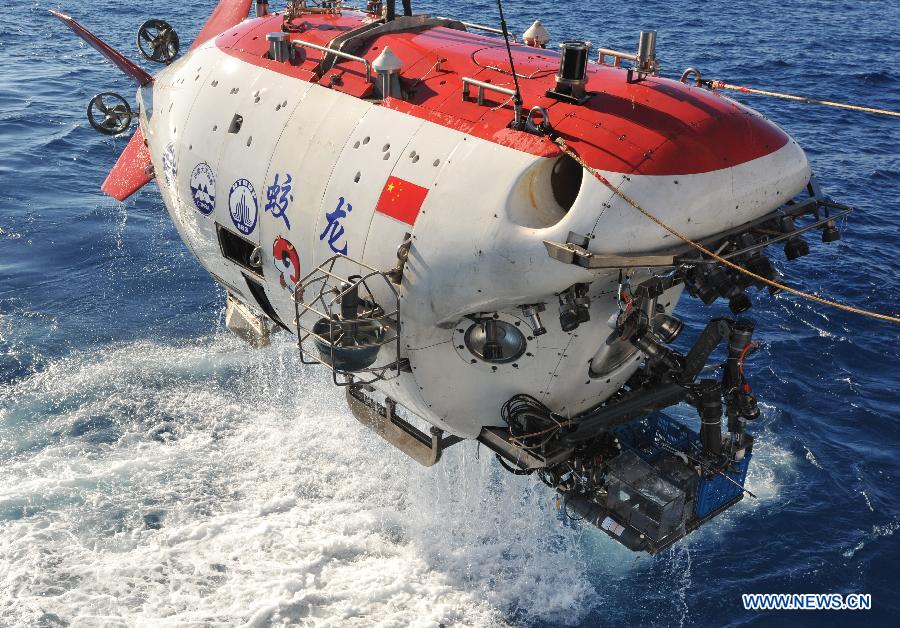Jiaolong collects perfect 'chimney vent' in Indian Ocean
Xinhua, January 4, 2015 Adjust font size:
China's deep-sea manned submersible Jiaolong collected a perfect "chimney vent" in the seabed of southwestern Indian Ocean on Saturday.
 |
|
China's deep sea manned submersible Jiaolong is lifted out of water in the Indian Ocean, Jan. 2, 2015. Jiaolong carried out the first dive on a mission to study active hydrothermal vent in the southwestern Indian Ocean on Jan. 2.[Photo/Xinhua] |
"Chimney vent", also known as hydrothermal sulfide, is one kind of seabed deposit containing copper, zinc and precious metal such as gold and silver. Those kinds of metal formed sulfide after chemical reaction and came to rest in the seabed in "chimney vent."
With several of mussels and spiral shells living on it, the "chimney vent" that Jiaolong collected was about 40-centimeter-high and 15-centimeter-wide, said Li Xiangyang, assistant chief commander of the mission.
"This is a perfect chimney vent for biologists and I believe there are lots of microorganisms integrated with it," said Xiao Xiang, professor with Shanghai Jiaotong University. "I am so excited about it."
Study of microorganisms is the base of researching ecosystem in hydrothermal areas, as microorganisms are nutrition resources of advanced organisms, Xiao said.
This "chimney vent" is very important for studying organisms in hydrothermal areas, which live in a completely dark world with rank poison, high-temperature and high-pressure, Xiao said.
The special genes of these organisms have great economic and scientific values, Xiao said.
The temperature of hydrothermal fluid flowing out of the collected "chimney vent" is 145 degrees Celsius, said Tang Jialing, who piloted Jiaolong in this dive.
Jiaolong also gathered 4.7 kg of sulfide, 39 kg of basalt, 32 spiral shells and 37 mussels.
Jiaolong, named after a mythical dragon, is on a 120-day expedition in the southwest Indian Ocean. It has planned to conduct 20 dives during the four-month period to research polymetallic sulfide, biological diversity, hydrothermal microbes and genetic resources in the area.


